Top 10 Foods Highest in Leucine
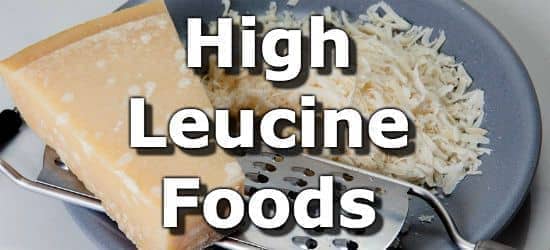
Leucine is an essential, branched-chain amino acid (BCAA), required for the growth and repair of muscle, skin, and bone. Leucine is suspected to be the only amino acid that can stimulate muscle growth and help prevent the deterioration of muscle with age. (1,2)
High leucine foods include chicken, beef, pork, fish (tuna), tofu, canned beans, milk, cheese, squash seeds, and eggs. The reference dietary intake (RDI) for leucine is 39mg per kilogram of body weight, or 17.7mg per pound. A person weighing 70kg (~154 pounds) should consume around 2730mg of leucine per day. (3)
Below is a list of the top 10 foods highest in leucine with the %RDI calculated for someone weighing 70kg (154lbs). For more high leucine foods see the extended list of leucine-rich foods.
-
 1. Chicken Leg
1. Chicken Leg
Leucine
per Roasted Leg (Thigh And Leg)Leucine
per 100gLeucine
per 200 Calories5160mg
(189% RDI)2000mg
(73% RDI)2174mg
(80% RDI)More Poultry High in Leucine
- 165% RDI per 6oz roasted chicken breast
- 163% RDI per 6oz of lean ground turkey
- 116% RDI per 6oz of roasted turkey breast
See all meats high in leucine.
-
 2. Beef (Skirt Steak)
2. Beef (Skirt Steak)
Leucine
per 6oz SteakLeucine
per 100gLeucine
per 200 Calories5007mg
(183% RDI)2945mg
(108% RDI)2198mg
(81% RDI)More Red Meat High in Leucine
- 85% RDI in 3oz of lamb roast
- 84% RDI per 3oz of beef roast
- 62% DV per 3oz beef hamburger
-
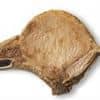 3. Pork Chops
3. Pork Chops
Leucine
in 1 Pork ChopLeucine
per 100gLeucine
per 200 Calories4501mg
(165% RDI)2185mg
(80% RDI)1714mg
(63% RDI)More Pork High in Leucine
- 117% RDI per cup of lean ham
- 88% RDI in a rack of pork ribs
- 68% RDI in a bratwurst sausage
-
 4. Tuna
4. Tuna
Leucine
in a 6oz FilletLeucine
per 100gLeucine
per 200 Calories4133mg
(151% RDI)2431mg
(89% RDI)2642mg
(97% RDI)More Fish High in Leucine
- 136% RDI per 6oz salmon fillet
- 127% RDI per 6oz tilapia fillet
- 125% RDI in 20 small clams
See all fish high in leucine.
-
 5. Firm Tofu
5. Firm Tofu
Leucine
per CupLeucine
per 100gLeucine
per 200 Calories3508mg
(128% RDI)1392mg
(51% RDI)1933mg
(71% RDI)- 85% RDI per cup of boiled soybeans (edamame)
-
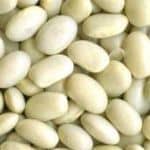 6. Canned Navy Beans
6. Canned Navy Beans
Leucine
per CupLeucine
per 100gLeucine
per 200 Calories1674mg
(61% RDI)639mg
(23% RDI)1131mg
(41% RDI)More Beans and Lentils High in Leucine
- 51% RDI per cup of large white beans
- 49% RDI per cup of kidney beans
- 47% RDI per cup of lentils
See all beans and lentils high in leucine.
-
 7. Milk
7. Milk
Leucine
per 16oz GlassLeucine
per 100gLeucine
per 200 Calories1563mg
(57% RDI)319mg
(12% RDI)1876mg
(69% RDI)More Dairy High in Leucine
- 52% RDI per cup of yogurt
- 28% RDI per cup of low-fat buttermilk
-
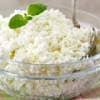 8. Low-Fat Ricotta Cheese
8. Low-Fat Ricotta Cheese
Leucine
per 1/2 CupLeucine
per 100gLeucine
per 200 Calories1531mg
(56% RDI)1235mg
(45% RDI)1790mg
(66% RDI)More Cheese High in Leucine
- 43% RDI per 1/2 cup of low-fat cottage cheese
- 36% RDI per grated oz of parmesan
- 31% RDI per oz of Swiss cheese
- 27% RDI per oz of gouda
See all dairy foods high in leucine.
-
9. Squash and Pumpkin Seeds
Leucine
per 1oz HandfulLeucine
per 100gLeucine
per 200 Calories678mg
(25% RDI)2388mg
(87% RDI)832mg
(30% RDI)More Nuts and Seeds High in Leucine
- 17% RDI per oz of pistachios
- 16% RDI per oz of peanuts
- 15% RDI per oz of almonds
See all nuts and seeds high in leucine.
-
 10. Eggs
10. Eggs
Leucine
in 1 Large EggLeucine
per 100gLeucine
per 200 Calories538mg
(20% RDI)1075mg
(39% RDI)1387mg
(51% RDI)
Printable One Page Sheet
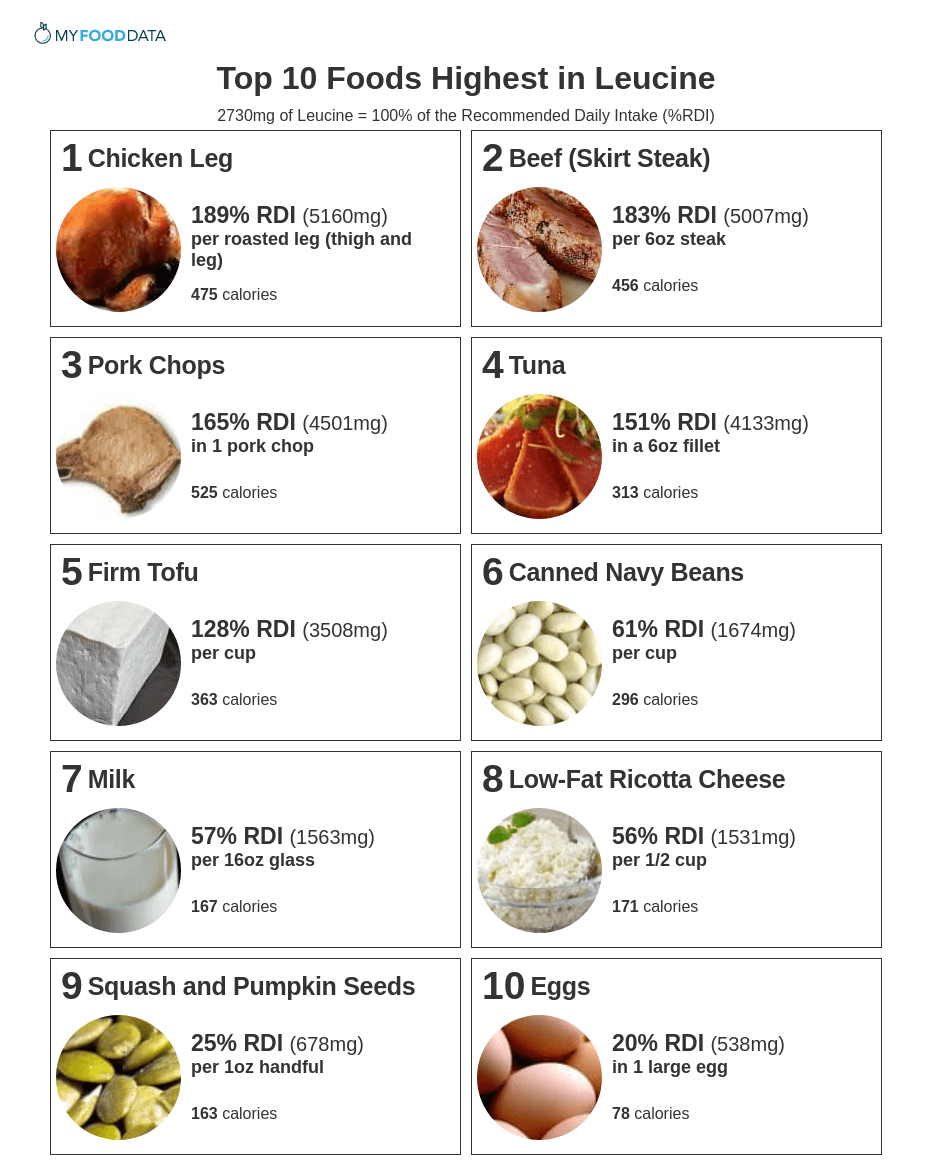
More Leucine Rich Foods
| Food | Serving | Leucine |
|---|---|---|
| 1. Processed Meats (Kielbasa Sausage) | per large link | 123% RDI (3356mg) |
| 2. Whelk (Cooked) | per 3oz | 119% RDI (3236mg) |
| 3. Cooked Eel | per 5.6oz fillet | 112% RDI (3056mg) |
| 4. Canned Sardines | 1 cup (drained) | 109% RDI (2981mg) |
| 5. Canned Shrimp | per cup | 79% RDI (2152mg) |
| 6. Soy Based Protein Powder | per 2oz scoop | 76% RDI (2071mg) |
| 7. Bacon | per 3 slices | 37% RDI (1013mg) |
| 8. Hemp Seeds | per oz | 23% RDI (614mg) |
| 9. Chia Seeds | per oz (~2 tblsp) | 14% RDI (389mg) |
| 10. Flax Seeds | per oz | 13% RDI (351mg) |
From the Nutrient Ranking Tool
Use the ranking tool links below to select foods and create your own food list to share or print.
- Foods High in Leucine
- Foods Low in Leucine
- Vegetables High in Leucine
- Fruits High in Leucine
- Vegetarian Foods High in Leucine
- Nuts High in Leucine
- Grains High in Leucine
- Beans High in Leucine
- Dairy High in Leucine
- Breakfast Cereals High in Leucine
- Fast Foods High in Leucine
View more nutrients with the nutrient ranking tool, or see ratios with the nutrient ratio tool.
Related
Data Sources and References
- Komar B, Schwingshackl L, Hoffmann G. The effectiveness of leucine on muscle protein synthesis, lean body mass and leg lean mass accretion in older people: a systematic review and meta-analysis J Nutr Health Aging. 2015 Apr;19(4):437-46. doi: 10.1007/s12603-014-0559-4. 25809808
- Leenders M, van Loon LJ. Leucine as a pharmaconutrient in health and disease Nutr Rev. 2011 Nov;69(11):675-89. doi: 10.1111/j.1753-4887.2011.00443.x. 22029833
- World Health Organization - Protein and Amino Acid Requirements In Human Nutrition
Try the recipe nutrition calculator, or daily meal planner.
Create a free account to log and track foods.

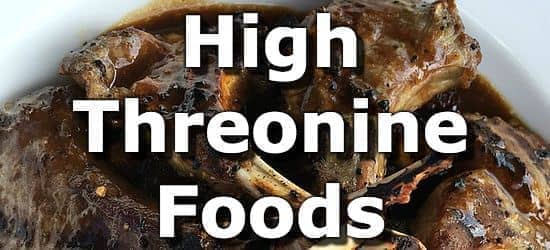 Next ➞
Next ➞